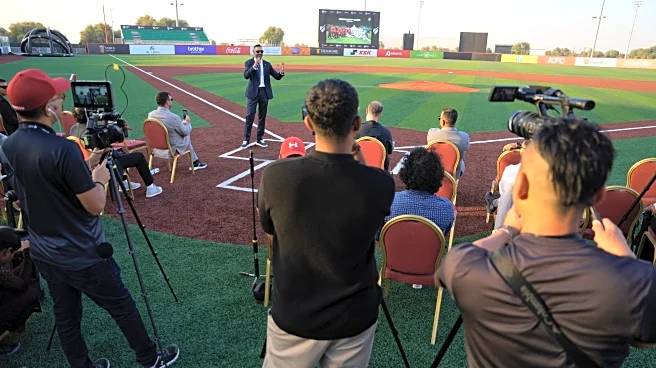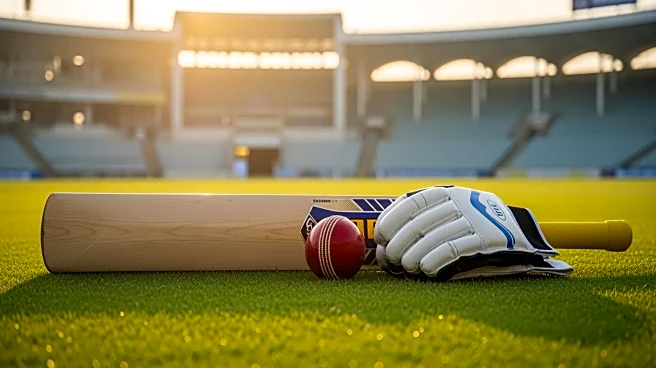What's Happening?
The IPL 2026 retention phase has concluded, with teams finalizing their squads ahead of the mini-auction scheduled for December 16, 2025, in Abu Dhabi. This year's retention and trade window saw significant
player movements, including blockbuster trades and strategic squad reshuffles. Teams were allowed to retain unlimited players within squad sizes of 18 to 25, adhering to a ₹120 crore salary cap. Notable trades include Ravindra Jadeja moving to Rajasthan Royals after 12 seasons with Chennai Super Kings, Sanju Samson transferring to CSK for ₹18 crore, and Sam Curran joining RR from CSK. Other major transfers include Mohammed Shami to Lucknow Super Giants, Shardul Thakur to Mumbai Indians, and Nitish Rana to Delhi Capitals. Teams also released several high-profile players to manage their budgets and squad balance.
Why It's Important?
The IPL 2026 retention and trade decisions are crucial for shaping team strategies and compositions for the upcoming season. The movement of star players like Ravindra Jadeja and Sanju Samson indicates a shift in team leadership and batting strategies, potentially altering the competitive dynamics of the league. The trades and releases allow teams to balance experienced players with promising young talent, aiming for a strong performance in the season. These changes can impact fan engagement, team sponsorships, and the overall financial health of the franchises involved.
What's Next?
With the retention phase complete, teams will focus on the mini-auction on December 16, 2025, to fill specific team needs. The auction is expected to feature competitive bidding for emerging talents and specialists to complement the retained squads. Teams will aim to maximize impact buys while maintaining balance, which could lead to intense competition and strategic maneuvers in the auction process.
Beyond the Headlines
The strategic reshuffles and player trades in IPL 2026 could have long-term implications for team dynamics and the league's popularity. The focus on young Indian talent suggests a shift towards nurturing homegrown players, which could enhance the league's role in developing cricket in India. Additionally, the financial strategies employed by teams to manage salary caps and player contracts reflect the evolving business models within the IPL.













